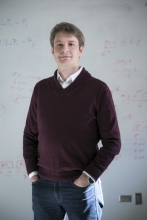
Professor
Department of Electrical and Computer Engineering
Duke University
Abstract: Increasing sets of functionalities, network interoperability and system design complexity have introduced easily exploitable security vulnerabilities in design of cyberphysical systems (CPS) with varying (including high) levels of autonomy. The tight interaction between information technology and the physical world further makes such autonomous systems vulnerable to attacks beyond the standard cyber-attacks, while relying exclusively on conventional security techniques may be unfeasible due to resource constraints and long system lifetimes. Consequently, there is a need to change the way we reason about security of CPS, and start designing platform-aware attack-resilient autonomy components and architectures capable of providing strong safety and performance guarantees even under attack. In this talk, I will present unique research challenges in this domain as well as our recent efforts on securing autonomous CPS, from methods to analyze the impact that attacks on perception could have on the overall system performance, to cyberphysical security techniques to introduce attack resilience at all levels of the autonomy stack, and integrate security mechanisms while providing tradeoffs between the system performance under attack and security-related overhead.
Bio: Miroslav Pajic is the Dickinson Family Associate Professor in the Department of Electrical and Computer Engineering at Duke University. He also holds a secondary appointment in the Departments of Computer Science and Mechanical Engineering. His research interests focus on the design and analysis of high-assurance cyberphysical systems with varying levels of autonomy and human interaction, at the intersection of (more traditional) areas of embedded systems, AI, learning and controls, formal methods and robotics.
Share
Upcoming Events
-
MSE 298 Seminar: Mechano-Electrochemical Phenomena at Ceramic Electrolyte Interfaces
-
CBE 298 Seminar: Beyond the Tailpipe - From the Science of Soot Formation to the Engineering of Carbon Nanomaterials
-
MSE 298 Seminar: Innovation In Materials Science - An Industrial R&D Perspective
-
MSE 298 Seminar: Understanding the Impact of Grain Boundary Inclination on Grain Growth Using Modeling and Simulation and Experiments
-
EECS Seminar: Mixed Conductors for Bioelectronics
